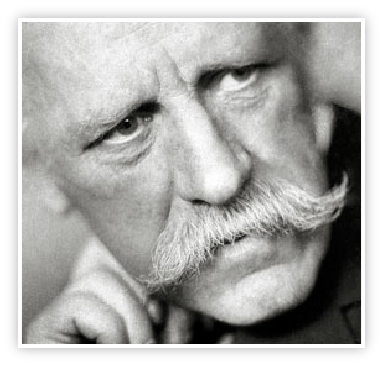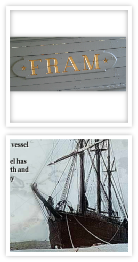





Nansen was clearly a person of many talents, abilities, and interests. His main contribution in geology was in the field of glaciology. He proved the existence of the Greenland Ice Sheet, thereby gaining general acceptance for the theory of glaciation that Agassiz had popularised half a century before. To commemorate Nansen's achievement, a group of Norwegians conducted a similar Greenland crossing in 1988 using the same kinds of equipment and techniques that Nansen had used a century before (Hagen 1989). His other major scientific works were in the field of oceanography, but he was not really a geologist.
Nansen developed an entirely new approach to Arctic exploration, one which was based on understanding and working within the environmental limits. Previous expeditions had attempted to transfer temperate European technique into a hostile environment without success. Many men and ships were destroyed, lost, or killed by such tactics. Nansen's expeditions, on the other hand, involved small crews and carefully conceived methods based on Eskimo and Lapp techniques of survival. In all of Nansen's exploits, not a single person, major piece of equipment, or important scientific observation was lost. No other person or exploration program, before or since, can claim such an outstanding record for success and safety under such adverse conditions.

Upon Nansen's return to Norway in 1896, he was appointed professor of zoology at Christiania University. Later his title was changed to professor of oceanography in 1908. He conducted much scientific work until 1917, including several oceanographic cruises and scientific reports. Among his notable credits are improvements of instrument design (Nansen bottle), explanation of wind-driven currents, and understanding Arctic waters.
Nansen became very involved in the political movement for Norwegian independence from Sweden. The Swedish-Norwegian union was dissolved peacefully in 1905. Nansen was appointed the first Norwegian minister in London, 1906-08. In 1917 he headed a Norwegian commission to the U.S. He negotiated an agreement to import essential supplies to Norway during World War I.
Following World War I, the League of Nations was formed, and Nansen was appointed head of the Norwegian delegation in 1920. He was the commissioner in charge of repatriation from Russia of nearly half a million German and Austro-Hungarian prisoners of war. Russia refused to recognize the League, but was willing to negotiate with Nansen. Most prisoners were returned. He was also the Red Cross commissioner to deal with Russian refugees of famine. He raised funds privately and created an identity card (Nansen card) for refugees. For his humanitarian efforts, Nansen won the Nobel Peace Prize in 1922. He remained an outstanding member of the League of Nations until his death in 1930.
